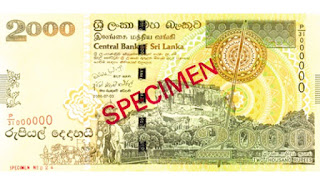Fruits in Sri Lanka - Tourist Directory
Fruits
Being a tropical country, Sri Lanka is home to a variety delicious tropical fruits such as mango, pineapple, jackfruit and banana. One of the earliest mentioned fruits in this country is mango. The well-known questions Arhat Mahinda asked King Devanapiyatissa to test the king's intelligence was about a mango tree. Most of the fruits in Sri Lanka are commercially grown though earlier they grew wild.
Pineapple
Pineapple is a perennial fruit available in Sri Lanka. The rough outside exterior is cut to reveal the fresh, luscious fruit that lies inside. The flesh and juice of pineapples are used to make fresh fruit juices. Pineapple forms part of the fruit salad that is tasty and contains many digestive enzymes like bromelin and fibres that are very important for a healthy digestive system. In our country pineapple is prepared and sold on roadsides as a snack. They are sold whole, or in halves with a stick inserted. Chunks of pineapple are not only used in desserts such as fruit salad, but also as a main ingredient in savory dishes. Although the pineapple season is from March to June, the fruit is available throughout the year.
Mango
Mango is generally sweet, although the taste and texture of the flesh varies according to the variety of mango. Mangoes are widely used in cuisine. Sour, unripe mangoes are used in chutneys, pickles, or side dishes, or may be eaten raw with salt, chili, or soy sauce. Mango can be tasted in various forms and includes fresh mango, juices and smoothies. Raw green mango is with salt, vinegar, black pepper and hot sauce.
Plantains/Banana
Banana is a favorite food in Sri Lanka and consists of many types. Ambul (sour), seeni, anamalu, ambung and ambung (red in colour) are some popular varieties. Bananas can be had anytime of the day and is a very popular dessert. It is essentially cheap except for Kolikottu which is considered an expensive variety. Bananas provide potassium and carbohydrates and are available throughout the country.
Mangosteen
Mangosteen is an amazing tropical fruit grown in Sri Lanka. It’s roughly the size of a tennis ball, the skin deep purple and very firm - more like a shell than skin. It has a stem with firm leaves that looks like a little cap. Mangosteens are eaten fresh. After removing the skin, the bright white flesh can be eaten. Mangosteen is becoming known for its antioxidants and micronutrients.
Papaw or Papaya
This fruit is perennial in nature and is found all year round in the country. It is eaten when the fruit is ripen being yellow in color and is an excellent after meals dessert. It has digestive enzyme named papine and large amounts of digestible fibre. Papaya is primarily cultivated as a home garden crop and yields fruit throughout the year.
For more info : Tourist Directory
Pomegranate
Pomegranate is cultivated in home gardens in Sri Lanka and is a medicinal plant and as well as a fruit tree. There is no other fruit crop that has high medicinal value compared to that in pomegranate. The pomegranate fruit is rich in beneficial antioxidants and medicinal properties and is had as a refreshing herbal drink that rejuvenates the body
Carambola (Star-fruit)
The fruit has distinctive ridges running down its sides (usually five, but can sometimes vary); in cross-section, it resembles a star, hence its name. The entire fruit is edible and is usually eaten out of hand, nothing to peel or seed. They may also be used in cooking, and can be made into relishes, preserves, and juice drinks.
Guava
Usually 3-4 inches in diameter, round or oval in shape depending on the species, guava has a pronounced and typical fragrance, similar to lemon rind but less sharp. The outer skin may be rough, often with a bitter taste, or soft and sweet. Varying between species, the skin can be any thickness, is usually green before maturity, but becomes yellow, maroon, or green when ripe. The pulp inside may be sweet or sour, and off-white to deep pink. The seeds in the central pulp vary in number and hardness, depending on species. Guava contains good amounts of vitamins C and A, as well as fibre, potassium and phosphorus.
For more info : Tourist Directory










































